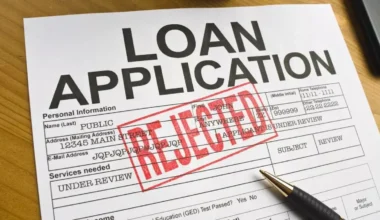Why your 20s matter more than you think
Your 20s are often messy. You’re juggling first jobs, rent, side hustles, relationships, and—sometimes—student debt. It’s tempting to push serious financial planning aside as something to get to “later.”
But here’s the secret: the foundations you lay now can make or break your financial future. Small, smart decisions made early tend to compound—while mistakes often spiral. In fact, nearly half of U.S. adults say they have only a fair or limited grasp of personal finance concepts.
So, if you want freedom, less stress, and more control over your money, the time to start is now—not when you “feel ready.” Let’s walk through how to build a personal finance plan in your 20s that’s realistic, flexible, and effective.
Step 1: Get real about where you stand
Before you race ahead to saving and investing, you must be honest with your baseline. Skip this step, and your plan will be built on smoke.
1. Track your income and spending
- For one month, write down everything you spend (apps, coffee, subscriptions, transport, rent, etc.).
- Use a budgeting app, spreadsheet, or even receipts and notes.
- Group your expenses into “needs,” “wants,” and “irregulars.” (More on methods in the next section.)
2. List your debts and interest rates
- Student loans, credit cards, personal loans, etc.
- Note how much you owe, the interest rate, minimum payments, and due dates.
3. List your assets, savings, and liquid accounts
- Checking accounts, savings, any investments, emergency stash, etc.
- This gives you a snapshot: how much you have vs. how much you owe.
Having this clarity helps you make confident, intentional decisions, rather than guessing or hoping.
Step 2: Choose a budgeting method that fits you
A “budget” sounds restrictive, but done right, it feels like a roadmap rather than a cage. The trick is picking a method that aligns with your habits, not against them.
Here are three popular approaches:
| Method | How it works | Best for | Key caution |
|---|---|---|---|
| 50 / 30 / 20 rule | 50% to needs, 30% to wants, 20% to savings & debt | Beginners who want a balanced approach | If your cost of living is high, you may need to adjust ratios upward for “needs” |
| Zero-based budget | Every dollar has a “home”—you allocate your income fully so that income – expenses = 0 | People who like structure and control | Requires consistent effort every month |
| Pay-yourself-first / automation | You funnel savings or debt payments first, then use the rest for expenses | If you dislike tracking and want “set it and forget it” | You may overspend the remainder if not careful |
In your 20s, the most important thing is consistency—not perfection. Many advice sources recommend starting with something simple like 50/30/20 and adjusting from there.
Pro tips:
- Automate recurring transfers to savings and debt accounts right when you get paid.
- Use separate accounts (or virtual “buckets”) for bills, spending, savings.
- Review and adjust monthly. Your life (income, expenses) changes fast in your 20s.
Step 3: Build (and defend) your emergency fund
This is the non-negotiable safety net that keeps your plan from derailing.
- Aim for 3 to 6 months’ worth of basic living expenses (rent, food, utilities, transport).
- If that feels too aggressive, start with a small goal first (e.g. $500–$1,000) and build up.
- Keep the fund in liquid, low-risk accounts (high-yield savings, money market accounts).
- Define clearly when you’re allowed to tap it (unexpected job loss, medical emergency, car repair—not vacations or splurges).
Without an emergency fund, even the best-laid plans are vulnerable to “shock events.” A surprise expense often forces people to use credit or derail savings goals.
Step 4: Tackle debt strategically (so it doesn’t sabotage you)
Debt is common in your 20s. But how you manage it determines whether it becomes a burden or a stepping stone.
Types of debt: good vs. bad
- “Good debt” might include a student loan taken for education, some business debt, or a mortgage (when managed).
- “Bad debt” includes high-interest credit cards, payday loans, excessive subprime lending.
A few debt-payoff strategies:
- Avalanche method: Pay off the highest-interest debt first, then move to the next.
- Snowball method: Knock out the smallest balance first (gains you motivation), then build momentum.
- Hybrid approach: Start with small wins, then switch to avalanche for high-interest.
While you’re paying off debt, don’t ignore your savings entirely. It’s fine to split your extra money between debt and savings—especially if you risk emergencies.
Many financial guides emphasize paying more than the minimums on high-interest balances first to free up cash flow.
Step 5: Build credit (your future self will thank you)
Your credit score opens doors—to lower interest rates, better renting options, even some jobs.
Here’s how to build it responsibly:
- Open a credit card (start small) and use it for small, regular purchases.
- Always pay in full and on time. No exceptions.
- Avoid maxing it out: keep utilization (balance ÷ limit) under ~30%.
- Don’t open many accounts all at once. The age of your accounts matters.
- Monitor your credit report annually for errors or fraud.
As you improve your credit, borrowing becomes less costly—so every decision now is like planting seeds for your financial reputation.
Step 6: Start saving and investing early—even if it’s small
Here’s where the magic of compounding works in your favor.
Why start now?
Even modest contributions now have decades to grow. A small monthly habit can turn into a meaningful sum later.
Where to put that money?
- Employer-sponsored plans (401(k), pension, etc.)—especially to capture matching contributions if offered.
- Individual Retirement Accounts (IRA / Roth IRA / local equivalents).
- Index funds or low-cost diversified mutual funds: these tend to outperform many stock-picking strategies over time. (Many young adults advise: “invest in broad index funds”)
- Brokerage accounts, side ventures, or other investment vehicles depending on your risk tolerance.
Start with what’s available, even if modest, and gradually increase as your income grows.
Step 7: Define clear goals (short, medium, long term)
A plan without goals is a ship without a destination. Goals give direction—and motivation.
Time horizon buckets:
- Short-term (6 months to 2 years)
Examples: Emergency fund, paying off small debts, vacation, learning a new skill. - Mid-term (2 to 7 years)
Examples: Saving for a car, down payment for a home, starting a business. - Long-term (7+ years)
Examples: Retirement, passive income, legacy giving, major life changes.
Each goal should include:
- A specific amount you aim to reach
- A deadline or timeframe
- A plan to fund it (monthly investment, side earnings, etc.)
Write your goals down. Revisit them often. Tracking goals increases your chance of hitting them.
Step 8: Insure and protect what matters
Even in your 20s, life throws curveballs. Protection is part of the plan.
- Health insurance: Absolutely essential. Medical emergencies can devastate finances.
- Liability/renter’s / home insurance (if applicable)
- Life insurance (if people depend on your income)
- Disability insurance: protects you if you can’t work temporarily
- Consider emergency standby funds, legal documents (wills, powers of attorney) depending on your context.
This may feel “boring,” but it is a “don’t skip” foundation for financial resilience. Many financial planning guides emphasize this protective layer alongside growth.
Step 9: Build multiple income streams (stay flexible)
Relying entirely on a single income is risky—especially early in your career. Some side income cushions your plan, accelerates goals, and gives freedom.
- Side gigs, freelancing, consulting
- Passive income: dividends, interest, royalties, online content
- Upskill and diversify: invest in skills that allow remote or freelance work
- Monetize hobbies (teaching, design, crafts, content)
Even small extra income helps snowball your plan—more on it goes to you, not expenses.
Step 10: Review, refine, and adapt (every 6 months)
Your 20s are full of change—new job, relocation, relationship shifts, salary jumps. Your finance plan must evolve too.
- Review progress: Are you hitting debt, savings, investment milestones?
- Rebalance your portfolio if it drifts from desired allocation.
- Adjust goals—some may be too ambitious, others too tame.
- Cut or adjust budget categories when your priorities shift.
- Celebrate wins, no matter how small—they keep you motivated.
Think of your plan as a living document—never “finished,” just better over time.
Common pitfalls (and how to avoid them)
It’s easier to stumble than you think. Here are frequent mistakes people in their 20s make, and how to dodge them:
| Pitfall | Why it hurts | How to avoid it |
|---|---|---|
| Ignoring small expenses | “It’s just $5 here and there” adds up over time | Track everything; use apps or categories |
| Waiting to start | Believing “I’ll start when I’m older, richer, more stable” | Start anyway. Imperfect action beats perfection |
| Overextending credit | Paying interest or creating debt cycles | Use credit cards wisely, pay full each month |
| Putting all bets on one untested idea | Venture fails, plan collapses | Keep your safety net and diversify |
| Skipping insurance | A single event derails everything | Budget for insurance early |
| Infrequent review | You drift away from your target | Set calendar reminders for biannual check-ins |
From inertia to impact: A sample “first-year” roadmap
Here’s a realistic 12-month path to turn ideas into action:
| Month | Focus | Milestone |
|---|---|---|
| 1 | Track income & expenses | Full month data, categorized |
| 2 | Create a budget | Choose your method, automate basics |
| 3 | Open / separate bank accounts | “Bills,” “spending,” “savings” buckets |
| 4 | Build emergency fund | Save first $500 to $1,000 |
| 5 | Begin paying down small debt | Use snowball / avalanche |
| 6 | Apply for a low-limit credit card | Use, then clear it monthly |
| 7 | Enroll in employer retirement plan (if available) | Contribute at least matching amount |
| 8 | Start investing in low-cost funds | Even $25–$50/month is a start |
| 9 | Add a side hustle or extra income | Even a small part-time gig |
| 10 | Purchase appropriate insurance | Health, liability, whatever applies |
| 11 | Assess and rebalance | Track progress vs. goals |
| 12 | Plan year 2 adjustments | Update goals, budget, strategy |
By month 12, you should feel more control, more momentum, and more confidence.
Why so many young adults avoid planning (and how to overcome it)
Here’s the honest truth: many in their 20s are intimidated—or think they don’t “deserve” planning until later.
- Only about 20% of Gen Z seek professional financial advice. Many rely on social media or friends.
- Many assume they’re too “young” or income is too low to bother.
- Others feel guilty for “outing” their debts or immature financial habits.
How to overcome mental blocks:
- Reframe: planning isn’t restricting—it’s creating freedom.
- Start small: you don’t need perfect numbers, just movement.
- Educate yourself: learn the basics so you feel empowered (books, blogs, credible sources).
- Seek objective guidance: mentors, trusted advisors, or low-cost financial counseling (if available).
- Choose accountability: tell a friend, track progress openly, or pair up with someone.
Once you commit to clarity over chaos, the emotional payoff is huge. You breathe easier, make confident decisions, and feel more control.
Long-term mindset: Money is a tool, not a trophy
Overemphasizing “income,” “richness,” or “wealth” can lead to chronic dissatisfaction or chasing status rather than security.
Here’s a better lens:
- Money is a tool to support your goals, values, and growth.
- The process (discipline, consistency, reflection) teaches habits that matter long past your 20s.
- Be comfortable with friction: delayed gratification leads to big wins later.
- Embrace change: your priorities, risk tolerance, and goals will shift.
If you treat your finances as a journey, with adjustments along the way, you won’t be derailed by every bump.
Wrapping it up: Your 20s plan is your gift to your future self
You don’t need a perfect plan before starting. You just need a direction—and the courage to begin.
Here’s your condensed action checklist:
- Track your money for one month
- Choose a budgeting method and automate
- Build an emergency fund
- Strategically pay debt
- Build credit responsibly
- Save and invest early (even small amounts)
- Define clear goals
- Protect your assets (insurance, legal)
- Diversify income
- Review and refine regularly
Start now—even imperfectly—and commit to consistency. In ten years, your future self will thank you.







